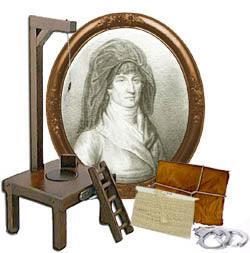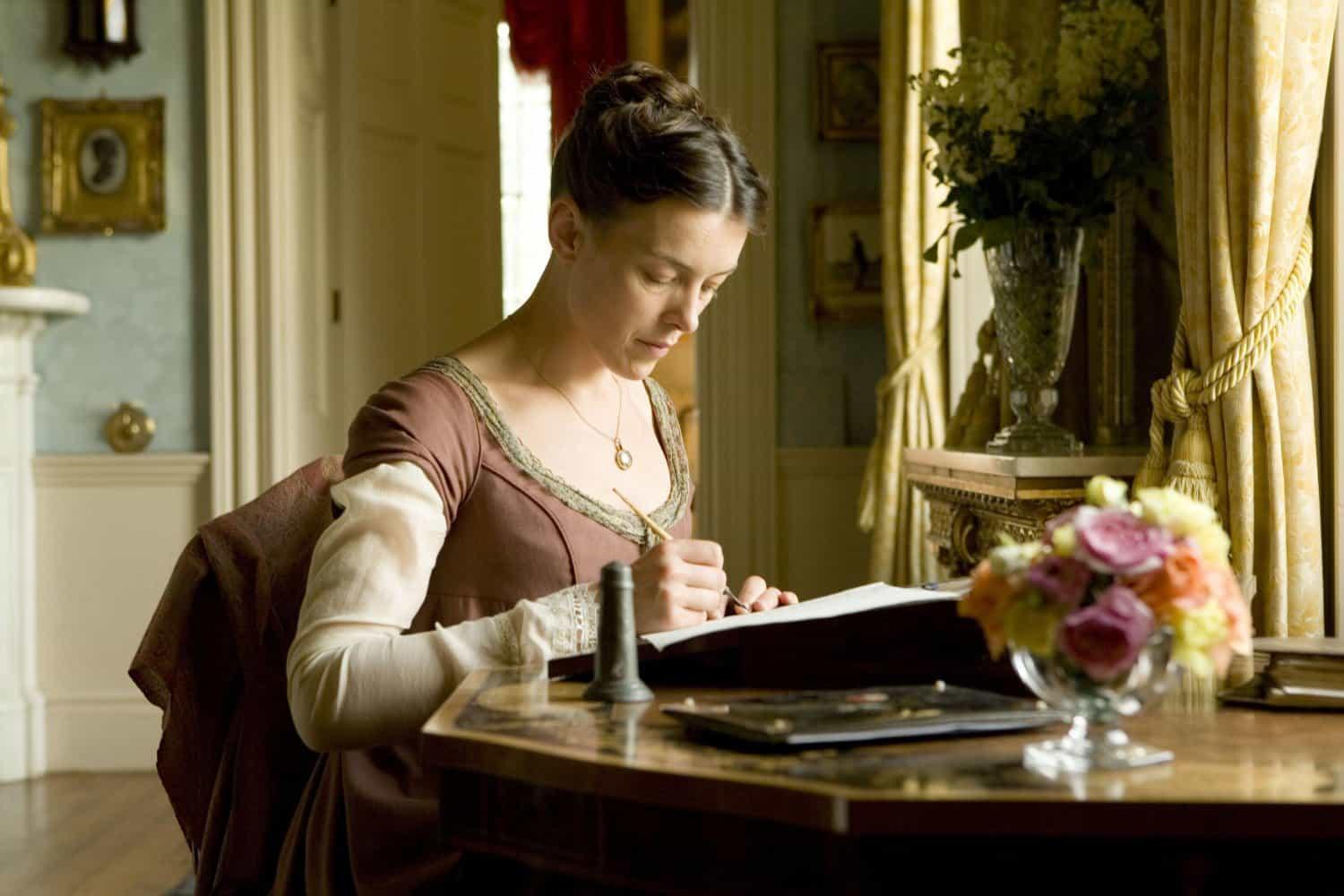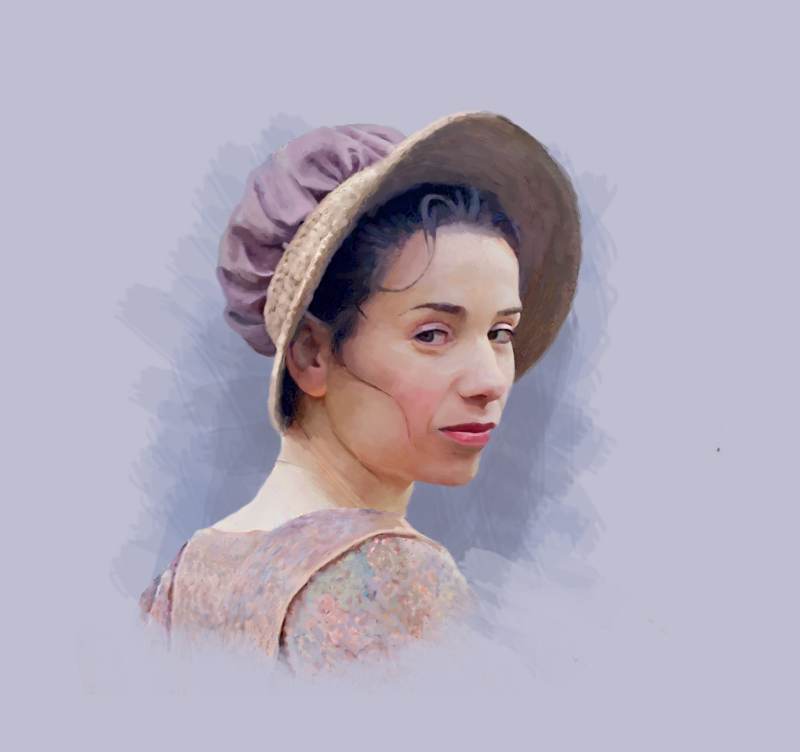
Aunt Jane's Trial
The Trial of Mrs Jane Leigh Perrot - the Primary Sources by David Pugsley Discussions of Aunt Jane’s trial and the question whether she was innocent or guilty are normally based entirely on John Pinchard’s account, conveniently re-printed in MacKinnon’s Grand Larceny (1937), as if there was no other source of information and as if all the witnesses were telling the truth. However, there are other contemporary sources
I. The advertisements in the Bath Chronicle and other local newspapers 
There is a series of advertisements in the Bath Chronicle for no. 1, Bath Street, near or opposite the King’s Bath: 14 May and 16 July 1795, Gregory & Co; 19 May 1796, 5 and 12 January 1797, W Smith; 11 May 1797, Smith, “Mrs Smith is also just returned with an elegant assortment of Millinery, etc”; 29 June 1797, Smith; 8 November 1798, 28 March and 4 April, 21 November (“The Proprietor”) 1799, 6 February, 10 and 17 April, and 11 more dates in 1800; 10 dates in 1801; 12 dates in 1802; 10 dates in 1803, plus 8 and 15 December (death of W. Smith); 8 dates in 1804; 9 dates in 1805; 8 dates in 1806, including 18 December (“A vacancy for an apprentice at Christmas”); and 3 dates in 1807, ending on 19 March, all Mrs Smith. Contrast Elizabeth Gregory’s evidence under cross-examination by Mr Dallas: “Witness said she had been in the shop nearly five years; kept it two years herself; is sister to Mrs Smith, who kept it before; Mr Smith in London 8th August; carried on business on her own account, not for the benefit of Smith and wife” (Pinchard, p. 10).
Under further cross-examination: “Mrs Smith was not entitled to more of the profits than witness chose to give her ... She bought and sold upon her own account and in her own name; it is customary and advantageous that the old name should be continued on shops, and it was sometimes done for years after a person had given up trade; Smith’s name was continued over the door with this view only” (Pinchard, p. 12). (Were Elizabeth Gregory and Charles Filby taking advantage of Mrs Smith’s absence in Cornwall to try to make a little money for themselves?) There were also advertisements for three different accounts of the trial:
- John Pinchard’s account, published on 10 April, price 2/- (Bath Chronicle; Reading Mercury, Sherborne Mercury, 14 April, etc.), of which no more need be said.
- The second edition of the Trial of Mrs Jane Leigh Perrot, printed and sold by W Gye, Market Place, Bath. Published on 10 April, price 6d. The advertisement in the Bath Chronicle is next to Mrs Smith’s advertisement for the shop. (Compare MacKinnon, p. 68: “I have not discovered that the ‘sixpenny account’ was in fact brought out.”) More details below.
- The Trial of Mrs Leigh Perrott, by Wm Legge, Esq. of the Temple, published on 24 April, price eighteen pence, with marginal notes (Bath Chronicle). I have not been able to find this account. The reference to marginal notes is tantalising.
- When Filby wrapped up the black lace, “he took a piece of whited brown paper from under the counter close to him” (Pinchard, p. 15); “he took up a small piece of paper close by him” (LM, p. 173).
- After Aunt Jane had left the shop Filby went down into the kitchen and told Miss Gregory, and she went up stairs (Pinchard, p. 17); she immediately went up stairs (LM, p. 174). “Witness some time afterwards went up and found Miss Gregory there with the card of white lace in her hand” (Pinchard ); “Soon after witness came up stairs into the shop, etc.” (LM). He then went out to look for Mrs Leigh Perrot “and saw her and her husband on turning the corner of the Abbey Church yard” (Pinchard, p. 18); “whom he immediately saw with her husband” (LM). “Witness saw Prisoner soon after this happened in the street by the Abbey Church yard; don’t know but that there was time for her to have gone home if she had chosen to do so” (Pinchard, p. 24); “thinks there might have been time between the period of prisoner’s leaving the shop and witness meeting her in the Abbey Church yard for her to have gone home if she had pleased” (LM, p. 175).
- At the end of Sarah Raines’ cross-examination the judge intervened:
- Q: You say he did not put any white lace in the parcel with the black; how could you know that not being particularly observant?
- A: I saw that he put in the black lace only.
- Q: Are you certain of that?
- A: Yes, my lord, I am. (Pinchard, p. 29).
- What is most striking is the omission in LM of all reference to William Gye, Lacon Lamb and William Smith, and the very limited reference to Mrs Smith. After Filby had seen Leigh Perrot’s name on the door of no. 1, Paragon Buildings, “he then went to Gye’s, and afterwards went with Miss Gregory to the Town Hall” (Pinchard, p. 18), omitted in LM, p. 174.

The opening paragraphs of the LM account appear verbatim in the Exeter Flying Post on Thursday 3 April, followed by a shortened version of the rest. The whole account appears in the Kentish Gazette on Friday 4 April and in the Staffordshire Advertiser on Saturday 5 April, under the headline:
THE INTERESTING TRIAL OF
MRS JANE LEE PERROT.
Accused of Shop-lifting, at the Somerset Assizes,
held at Taunton, on Saturday last.
It includes the sentence: “Witness said the lace had been in the possession of one Mr Gye, of Bath, for one night only; that he returned it to her the next day.” There is no other reference to Mr Gye in that account. I conclude that Gye’s original version was circulated to a number of local newspapers. It should not have contained any reference to him at all. Presumably he was worried about the risk of a prosecution for conspiracy to blackmail, and wished to distance himself from the affair as far as possible. When the offending sentence was noticed, a second edition was published, cutting it out, and that was the version which was published in the Lady’s Magazine. Aunt Jane would have been horrified if she had known that her portrait illustrated his account. Discussions of Aunt Jane’s trial and the question whether she was innocent or guilty should take into account all the primary sources.This Day is published, price 2s.
With a Plan of Miss Gregory’s Shop,
THE TRIAL of Mrs LEIGH PERROT,
charged with Stealing a Card of Lace in the Shop
of Elizabeth Gregory, Milliner and Haberdasher, in
BATH; before Sir Soulden Lawrence, knight, at Taunton
Assizes, the 29th of March 1800.
TAKEN IN COURT BY
Mr PINCHARD, Attorney, of Taunton.
Taunton, printed by and for Thomas Norris; and sold
by all the booksellers in Bath and Bristol; ...
Bath Chronicle, 10 April 1800, p. 2.This Day is published, price 6d.
THE SECOND EDITION OF
THE TRIAL of Mrs JANE LEIGH PERROT,
as taken in Short-Hand, at Taunton Assizes, March
29th, 1800; in which are given the names of Counsel and
Solicitors for and against the prosecution; list of the
Jury, and their places of abode; opening of the Trial by
Mr Gibbs; Cross-examination of Witnesses by the differ-
rent Counsel; and Mrs LEIGH PERROT’s SOLEMN
APPEAL at the BAR; together with all the different
Testimonies given by Persons of distinction, and several
Tradesmen of Bath, as to character; and also the sub-
stance of the Judge’s Charge to the Jury.
PRINTED AND SOLD BY
- GYE, MARKET-PLACE, BATH;
And to be had of the booksellers in Bath, Bristol, Taun-
ton, Bridgwater, Wells, Devizes, Marlborough, Reading,
and of Champance and Co. London.
Bath Chronicle, 10 April 1800, p. 3.MRS. LEIGH PERROTT.
This day is published, price Eighteen-pence,
WITH MARGINAL NOTES,
THE TRIAL of Mrs. LEIGH PERROTT,
By Wm. LEGGE, esq, of the Temple.
Sold by Crosby, Stationer’s, Pater-noster-Row,
London; and by Mr Cruttwell, Bath.
Bath Chronicle, 24 April 1800.GREAT BARGAINS!
To be SOLD OFF, at and under Prime Cost,
FOR THE BENEFIT OF THE ESTATE OF
- SMITH, DECEASED,
All the Newly-selected and Valuable STOCK of
LACES, HOSIERY, SILK MERCERY,
FURS, MUSLINS, HABERDASHERY, &c.
At No. 1, BATH STREET.
N.B. All persons indebted to the above Estate, are
requested to pay the same into the hands of M. SMITH,
the Administratrix, at No. 1, Bath Street; --- and all per-
sons to whom the said Estate is indebted, are desired to
send in their accounts.
Bath Chronicle, 8 and 15 December 1803.
III. Aunt Jane’s side of the story
September 11th 1799.
I must enter into a few particulars, my dear Couz (Montague Cholmeley), though you must have heard enough to make you in part acquainted with our situation. It is now five weeks since I went into Smith’s, a Haberdashers in Bath Street, to buy some black Lace to trim a Cloak; when I had bought it the Shopman took it to the further part of the shop to put it up – this might have struck me as something particular had I not given the Man a £5 note to pay himself and bring me the difference – when he left me I turned from the counter to the door to catch my Goodman who in going to drink his Water generally passed that way. When the Man brought me my Change and the Parcel I left the Shop carrying the Parcel in my hand. I went homewards the same way that Perrot usually came and had not gone far before I met him. We went together to the Cross Bath, stopped to pay a tradesman’s bill, and as we had a letter to put into the Post Office were going through Bath Street, where I had an hour before bought my Lace; and when we came opposite the Shop the Woman who had sold me the Lace came across the Street and accosted me with these words:
“I beg pardon, Madam, but was there by mistake a card of white lace put up with the black you bought?”
I answered I could not tell as I had not been home, but she might satisfy herself as the parcel had never been out of my hand – on saying which I gave it to her. She opened it, and there was a Card of White Edging which she took out saying, “Oh here it is,” and returned to the Shop. This did not surprise me as I thought it might have proceeded from Shop hurry or Negligence; but before we had got to the Abbey Church Yard the Man who had taken my Lace away to fold up, came after us to desire to know my Name and place of Abode as he had never put up that card of White Edging. This alarmed me a good deal because I had neither asked for White Lace nor had I seen any such thing in the Shop. Never hearing a syllable on the subject from the Thursday till the Monday Night I concluded they had discovered how their Mistake had originated, but on our return from passing Monday evening with some Friends, the servant brought me a letter left by the penny post – without name or date, directed to Mrs Leigh Perrot, Lace dealer, no. 1, par, containing these lines: “Your many visiting Acquaintance, before they again admit you into their houses will think it right to know how you came by the piece of Lace stolen from Bath Street a few days ago. Your husband is said to be privy to it.”
On Wednesday following (the 14th) I was sitting up in my dear Perrot’s Bed Chamber when my Maid came up and said a Gentleman in the Parlour wanted to speak to me. Judge of my horror upon going down to find he was a Constable with a Warrant from the Mayor for my immediate appearance. I went up to Perrot sick in Bed, and in profuse perspiration, who forgetting everything but my danger got up and attended me to the Mayor, where we found these two Wretches who had sworn solemnly, the One to seeing me take the Lace, the Other to finding her Lace to the value of 20/- in my possession. This she certainly did, but how it came there they best can tell, as the first I ever saw of it was on the Woman’s unfolding the paper with my black Lace. The Mayor and Magistrates, to whom we were well known, lamented their being obliged to commit me to prison on the oaths of these People. They could only act in the capacity of Magistrates, whatever their own private opinions might be. To prison I was sent. J. L. P., Somerset & Dorset Notes & Queries, March 1924, 4-5. This passage omitted by MacKinnon, p. 20.
David Pugsley, MA, BCL, Oxon; Hon LLD, Rouen, Hon Archivist of the Western Circuit, is a legal historian with a speciality in famous West Country trials.



2 comments
William Gye was a well known Bath printer; but he was not a philanthropist, and the inscription on the floor of Bath Abbey does not say so. Philanthropists give their own money for worthy causes; they do not simply collect and distribute other people’s money. A printer with eleven children could hardly afford to give away his own money. Indeed he was accused by two of his employees of not even distributing all the money that he collected. “Under a pretence of Charity, he collects Money which he applies to his own use. This is one of the Virtues he deceives People with.” “I look upon a Religious Hypocrite to be the most dangerous of all sinners, & this Man under that disguise is employed to relieve distresses by Charitable People, whose Bounty is never half received by those for whom it is intended.” MacKinnon, Grand Larceny, 26-7. “His character has been long more than doubtful; on more occasions than one he has barely escaped punishment.” Mrs Foley, MacKinnon, 59. “Nineteen out of twenty gentlemen believe him to be the instigator for the prosecution against Mrs Le Perrot, well knowing his mercenary and artful Disposition. The writer wishes you to keep a watchful eye towards this Dark Hypocrite.” MacKinnon, 128.
Aunt Jane: “experienced criminal lawyer” would be more inclined to suspect that Mrs Leigh Perrot was a bit light-fingered. Mr Justice Butcher, High Court Judge and legal historian, says: “I have read about the lace with interest. Clearly not guilty in truth as well as in result. It makes you wonder though – how could the Judge take an hour to sum up when the jury had just heard the – limited – evidence?” John Morris, KC (1734-1814), for many years one of the leading counsel on the Western Circuit, wrote to James Leigh Perrot: “He was fully convinced of her innocence even from the accusation itself… He was satisfied of her innocence as soon as he knew the evidence originally given against her… He could not suffer his estimate of evidence (which his long professional habits have give him some pretensions to form) to be borne down by the common babbling & scandal of people neither able to judge or willing to enquire into the truth.” MacKinnon, 121.
David Pugsley
A bit tough on William Gye, a well known Bath printer and philanthropist buried in Bath Abbey after a funeral which 4000 local people attended. At the age of 22 he printed the first African slave narrative published in Britain. Throughout his life he campaigned for imprisoned debtors, raised funds for the local hospital and printed many devout Methodist tracts for the Countess of Huntingdon. His sympathies were with the underdog but it does not make him a villain or a liar. As an experienced criminal lawyer I’d be more inclined to suspect Mrs Leigh Perrot was a bit light fingered. Shoplifting often results from distress or depression and should never have been a capital offence. Great she was acquitted (get a clever lawyer down from London… it still works) but a bit of balance wouldn’t go amiss.
Ms Jane Hickman
Leave a comment
This site is protected by reCAPTCHA and the Google Privacy Policy and Terms of Service apply.